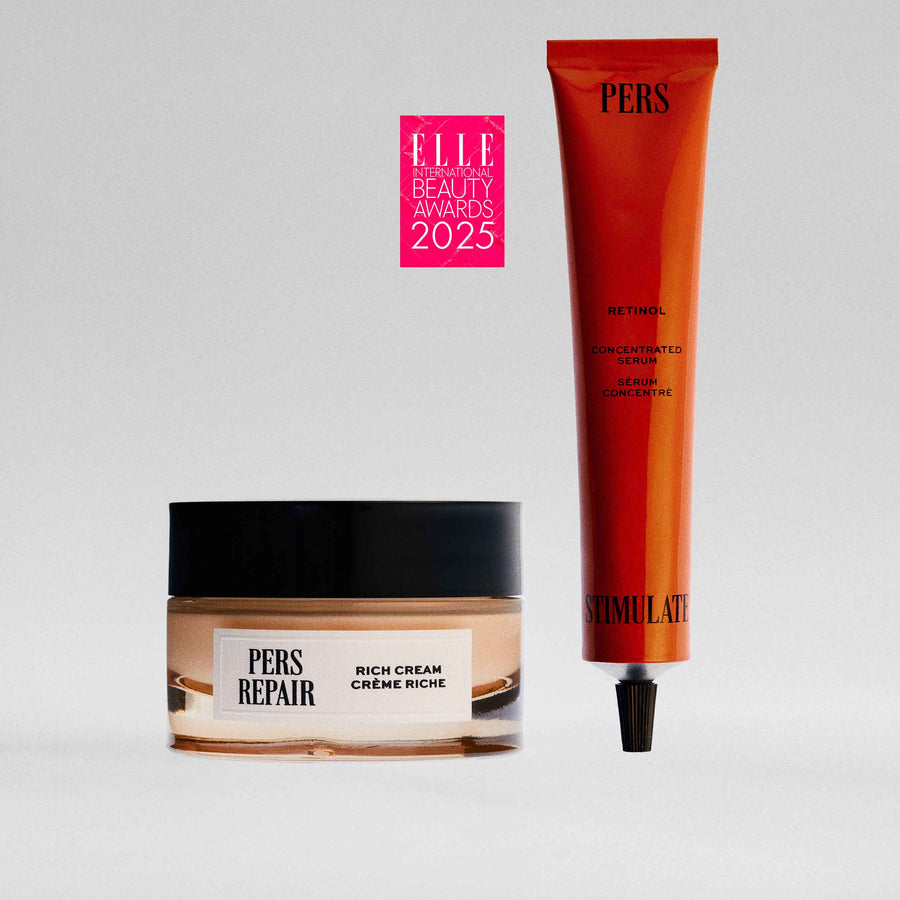How do dilated pores on the nose and forehead reveal combination skin in a skincare routine?
Have you noticed dilated pores on your nose and forehead? This could indicate that you have combination skin. This rather common skin type is characterized by a combination of oily and dry areas, making facial care sometimes tricky. With the right skincare routine, however, your skin can achieve a beautiful balance. You're probably wondering how these pores influence your choice of skincare products? Don't panic, let's find out together how the visiblesigns on your skin can be used to optimize your skincare. We'll also look at effective strategies for managing these characteristics and improving the appearance of your pores. Get ready to find simple, practical answers to caring for your combination skin!

Signs and characteristics of combination skin in a skincare routine
Dilated pores on the nose and forehead: indicators of combination skin
You may be wondering why your nose and forehead seem to have more visible pores than the rest of your face. It's a classic sign of combination skin. These areas, often called the T-zone, are prone to increased sebum production. This can lead to dilated pores, giving the skin an uneven appearance. But don't worry, this is a common feature that can be managed with the right skincare routine.
To manage these dilated pores, it's crucial to adopt a gentle yet effective cleansing routine. Using non-comedogenic products will help prevent clogged pores while maintaining your skin's natural balance.
Oily and dry areas: understanding combination skin
Have you noticed that some parts of your face are more oily while others seem dry? This is typical of combination skin. Cheeks can appear dry or sensitive, while the T-zone shines more due to excessive sebum. This duality calls for a balanced approach to your daily skincare routine.
The trick to caring for combination skin is to treat each zone according to its specific needs:
- Targeted cleansing: use a gentle cleanser to prevent already dry areas from drying out, while controlling excess sebum on oily areas.
- Adapted serums: apply a moisturizing serum to the cheeks and a mattifying serum to the T-zone to keep the whole face balanced.
- Appropriate moisturizing: opt for a light, non-greasy cream that moisturizes without weighing down oily areas.
This may seem complex at first, but by personalizing your routine, you can achieve that perfect balance where each part of your face gets exactly what it needs.
Impact of dilated pores on the nose and forehead in a skincare routine
Common problems associated with enlarged pores on combination skin
Dilated pores, particularly on the nose and forehead, can sometimes be a real headache. You may notice that these areas tend to shine more quickly or appear less smooth. That's because dilated pores more easily accumulate excess sebum and impurities, which can lead to imperfections like blackheads or even a few pimples. But don't panic! Understanding these problems is already a big step towards solving them.
To help you better manage these concerns, here are a few simple solutions:
- Regular exfoliation: helps to unclog pores by removing dead cells and excess sebum.
- Purifying masks: using a clay-based mask once a week can absorb excess oil and tighten pores.
- Targeted care: apply a product containing salicylic acid or niacinamide to visibly reduce pore size.
The influence of dilated pores on the choice of skincare products
Having dilated pores requires special attention when selecting your skincare products. You'll want to opt for lightweight formulas that won't clog pores while regulating sebum production. For example, choosing a gentle yet effective cleanser is crucial to avoid excessive drying that could further stimulate sebum production.
Also consider non-comedogenic moisturizing serums and creams that provide just the right amount of hydration without weighing your skin down. Here are a few essential criteria for your products:
- Non-comedogenic: make sure your products don't block your pores.
- Light and mattifying: ideal for controlling unwanted shine.
- Gently purifying: choose products containing soothing ingredients such as aloe vera or green tea.
With these special attentions, you can transform your daily routine into a soothing ritual that respects and beautifies your combination skin. Remember, every little effort counts to reveal radiant, balanced skin!
Effective approaches to managing enlarged pores in combination skin
Cleansing routines to reduce enlarged pores
You've probably noticed that your combination skin needs special attention, especially around the nose and forehead where dilated pores are more visible. The right cleansing can make all the difference. Opt for a gentle cleanser that purifies without aggressing.
The trick is to make double cleansing part of your routine:
- First step: use a cleansing oil or balm to dissolve make-up and excess sebum;
- Second step: apply a water-based cleanser or foaming gel to remove any remaining impurities.
It may seem tedious at first, but you'll soon see how this method improves your skin's texture and reduces the appearance of enlarged pores.
Hydration and targeted treatment for balanced combination skin
Moisturizing is essential, even if some parts of your face appear oilier. Choose lightweight products that moisturize without clogging your pores. Consider using a moisturizing serum containing hyaluronic acid, which draws moisture into the skin without weighing down the T-zone.
Don't forget to incorporate targeted treatments:
- Niacinamide-based serums: help regulate sebum production while visibly tightening pores;
- Light mattifying creams: ideal for controlling shine while providing much-needed hydration to dry areas.
With these simple but effective adjustments, you can transform your daily routine into a pleasurable moment that respects every unique nuance of your combination skin. Remember, every care you take helps to reveal radiant, harmonious skin!
We recommend these other pages
- How does sebum production influence the distinction between combination and normal skin in a skincare routine?
- Why does the sensation of dryness in certain areas indicate combination skin in a skincare routine?
- How does the appearance of shine in certain areas distinguish combination skin from normal skin in a skincare routine?
- Why does combination skin require special attention on the T-zones in a skincare routine?

